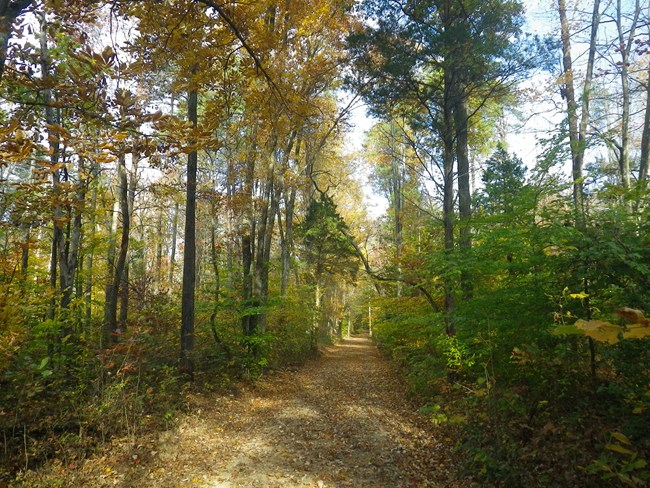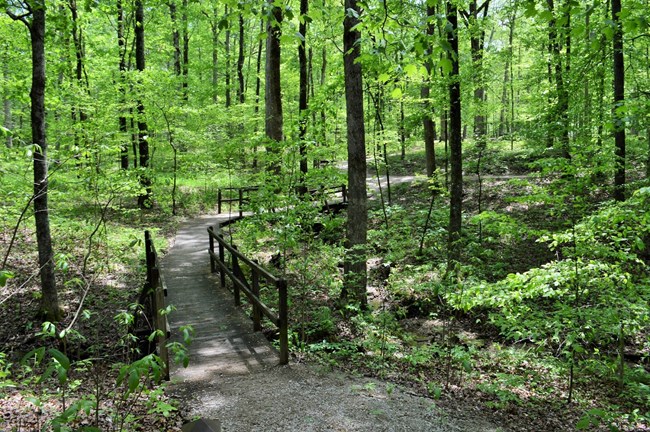|
The forest in Mammoth Cave National Park can be generally described as a mixed-deciduous/coniferous forest (sometimes called a mixed mesophytic forest). The park is located in the transitional zone between historic open grasslands and drier oak-hickory forests to the west, and the moister mixed forests to the east. The park is likewise located transitionally between the sub-tropical climates to the south and the colder climates to the north. The result is a mixed forest with many of the plant species found in the park at their northern, southern, eastern, or western limits of their natural range. Collectively, each of the forest community sub-types make up the larger 53,000 acre mixed forest of Mammoth Cave National Park, making the park one of the largest contiguous forested areas in west-central Kentucky. Forest Sub-typesMixed ForestThe broad general category of the mixed forest can be broken down into more specific categories or sub-types based on dominant species in each particular area. The park contains more than 1,200 species of flowering plants, including over 80 species of trees. Over a third of the park is dominated by oak-hickory forests and woodlands. 
NPS Photo/Mary Schubert Oak-Hickory Forest/Savanna
Karst Valley Forest/Savanna/PrairiePre-settlement vegetation types in karst valleys south of the Green River are unknown, and most of these large expanses of dry limestone habitat were farmed prior to park establishment. The farmed areas have now become largely dominated by eastern red cedar and Virginia pine mixed with deciduous trees along the outer margins. Limestone Cedar-Oak Rock Outcrop StandsIn the driest limestone habitat types, especially on south to west facing slopes, cedar-oak outcrop communities prevail. These are sites where eastern red cedar is not successional, and where the inherent dryness of the site is an important factor in limiting growth of deciduous trees other than drought tolerant species such as chinkapin oak and blue ash. 
NPS Photo Mesic Slope and Floodplain ForestsMoist ravines connected with the major river valleys support beech, maple, and tulip poplar in largely damp limestone habitats. On the floodplain alluvium, boxelder maple, sycamore, and the occasional river birch complement beech and maple trees. These habitats receive limited sunlight and are watered by runoff in addition to their own catchment. Ridgetop Pine-Oak StandsLocated on the edges of sandstone cliffs facing south to west, dry more acidic habitats support nearly pure but narrow stands of Virginia pine and chestnut oak. Analogous to the cedar-oak glades, these sites are where Virginia pine is not successional. Droughty conditions are clearly a factor in the maintenance of these stands. Forest SuccessionMany areas in the park that were once cleared of trees and inhabited by people now display a mix of red cedars and mid-sized deciduous trees. Red cedars are what is sometimes called a pioneer species, meaning they tend to thrive on land that has recently been cleared of other, taller, tree species. Eventually, when the cedars become the shortest trees in the forest and lose the sunlight they need, they will be fully replaced by slower growing, longer lived hardwood trees. This natural process is called succession. commonly seen in the parkTrees |
Last updated: November 3, 2021
